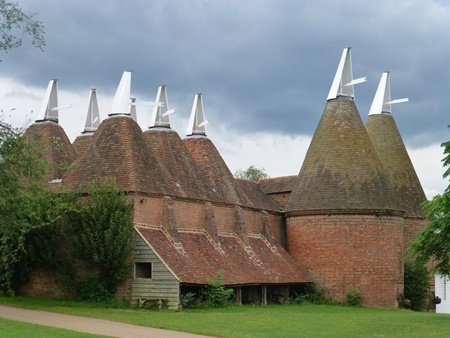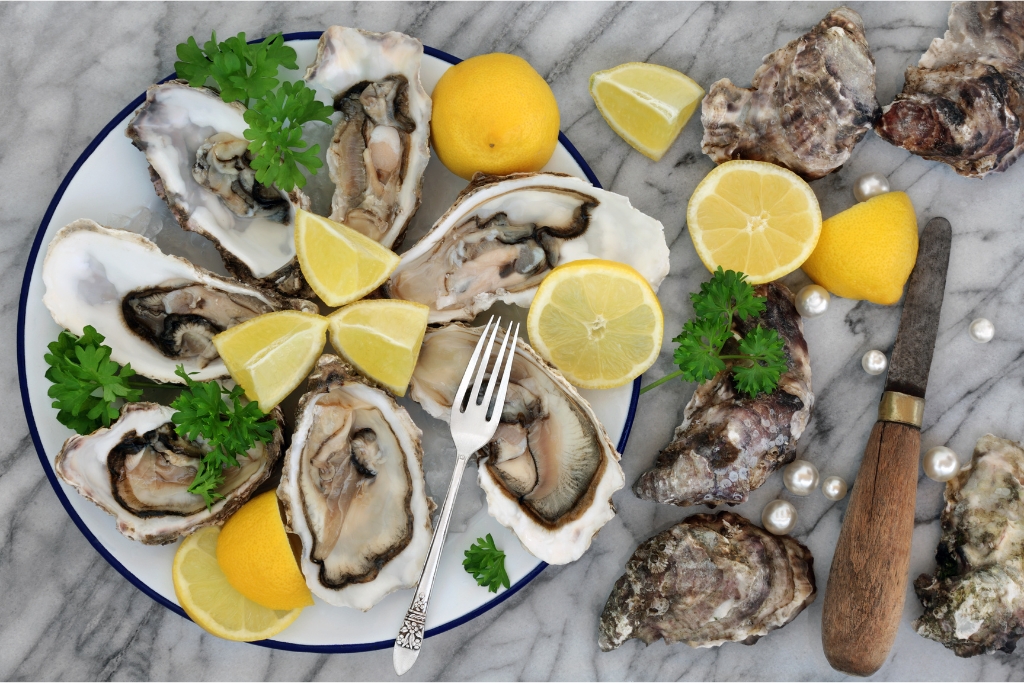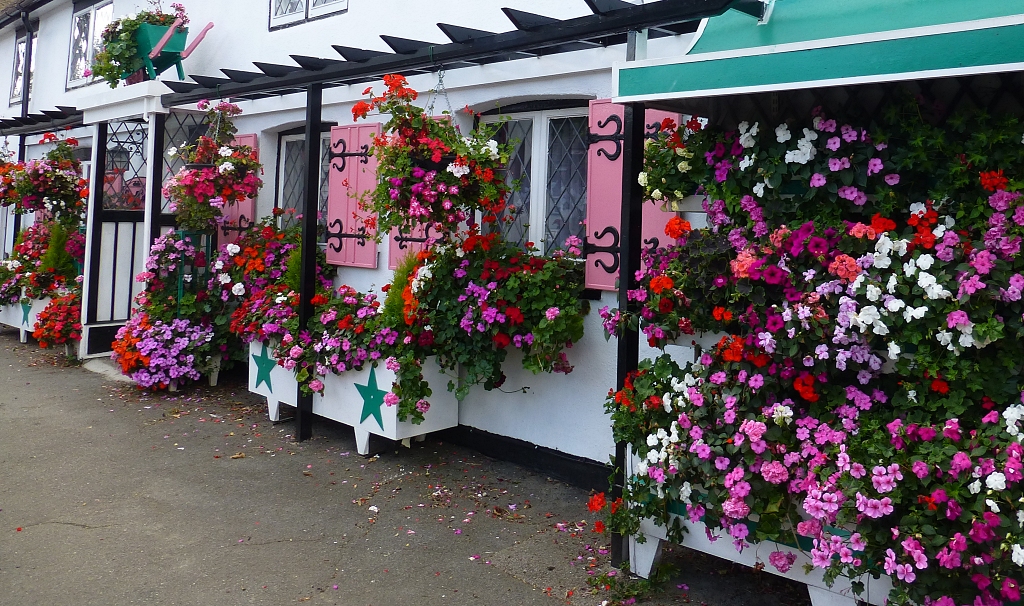Food Made in England
A Taste of Kent
I can't help myself. Whenever we go on holiday anywhere, I just have to hunt up food that's truly local.
Our trip to Kent was no exception. We stopped in pubs, stuck our noses into bakeries and delis, and took a look at farm shops and farmers markets. It's always as if I have to a taste of Kent to remind me of days out, afternoon teas and great pub lunches!
Kent, often called the Garden of England, is justly famous for its fresh produce. There are apples and cherries, berries and beans, asparagus and oysters, whitebait and samphire, cobnuts and marsh lamb.
Kent also has a long tradition of hop growing and beer brewing going back to Tudor times. Oast Houses, the round-towered homes with a roof designed to dry the harvested hops (see image below), can be found everywhere across the county.
To top it off, Kent has a raft of wonderful recipes - from cheeses to pies to biscuits to relishes and pickles. A taste of Kent will make your mouth water as soon as you start to read.
 Kentish Oast Houses © essentially-england.com
Kentish Oast Houses © essentially-england.com
A Taste of Kent
Kentish Beer
These days, we can't imagine beer without hops. Prior to the 16th century, this was a different matter. Beer was made primarily from honey and malt, until England's first hop garden was established in 1522 and the new taste soon proved popular. By 1655, a third of all hops produced in England came from Kent and after the creation of Porter Beer, which uses a lot of hops and quickly grew very fashionable, hop growing turned into a wealth producing growthy industry.
Romney Marsh Lamb
A real taste of Kent, Romney Marsh lamb is produced by traditional grazing of the Romney breed of sheep on the salt marshes of Romney, giving the meat a unique flavour. The Romney Marshes can be a harsh, exposed place, so sheep grazed here produce extra fat which marbles the meat, adding to the flavour and making it moist. The meat has a richer and sweeter flavour than meat produced from the same breed which has been grazed on regular pasture and is known for a delicate taste even in older lambs.
Whitstable Oysters
 Plate of Oysters © marilyna | Getty Images canva.com
Plate of Oysters © marilyna | Getty Images canva.comMention Whitstable and somebody is bound to mention oysters. It's what's been making this little Kentish town truly famous.
Oysters have been widely fished and farmed in the area for hundreds of years, though during this time they've grown from cheap food for the masses into something of a coveted delicacy that's available in the swankiest of London's hotels and restaurants or, of course, in Whitstable itself.
As well as being a prime source of oysters, Whitstable holds and annual Oyster Festival, celebrating all things fishy and those who produce the sought after food. The festival is a colourful local event with much to eat, try and experience for all the family - so why not go visit and catch a taste of local food while you're there?
Biddenden Cake
Biddenden Cakes are only available in the village of the same name on Easter Monday. Made from flour and water, so hard as to be almost inedible and imprinted with the image of the Biddenden Maids, they're a charitable offering going back hundreds of years.
Folkstone Pudding Pie
Also referred to as Lenten Pie, Folkestone Pudding Pie is a ground rice and milk pudding filling within a pastry case. It's supposed to originate in the port of Folkestone, but - according to Mrs. Beeton - is known throughout Kent.
Huffkins
Huffkins are soft white bread rolls, each with a deep thumb print in the top. I'm told that they can be eaten split and buttered like a muffin or any other bread roll, but that, in Kent, the thumb print is filled with cream, jam or - at just the right season - Kentish cherries. The recipe doesn't seem to list anything but flour, water, yeast, butter and a little salt... so that's one I'll be trying out one of these days.
Have you enjoyed a taste of Kent?
Find more traditional English food on this page.




